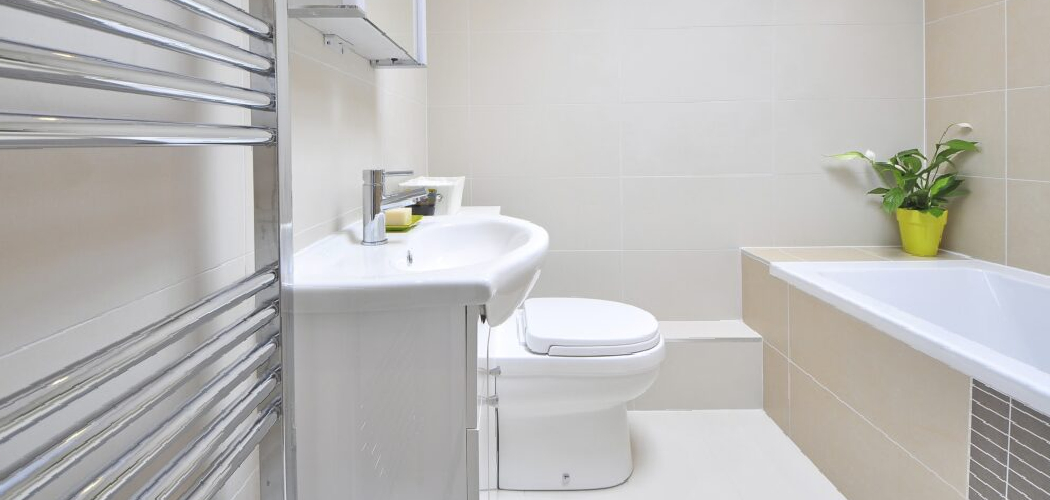Adding a bathroom to a basement can significantly enhance the functionality and value of a home. However, the absence of existing plumbing presents a unique set of challenges. Challenges of Adding a Bathroom in a Basement Without Existing Plumbing primarily include figuring out how to manage waste and water supply without the direct use of in-place sewer and water lines. This demands innovative solutions that can bypass traditional plumbing methods.
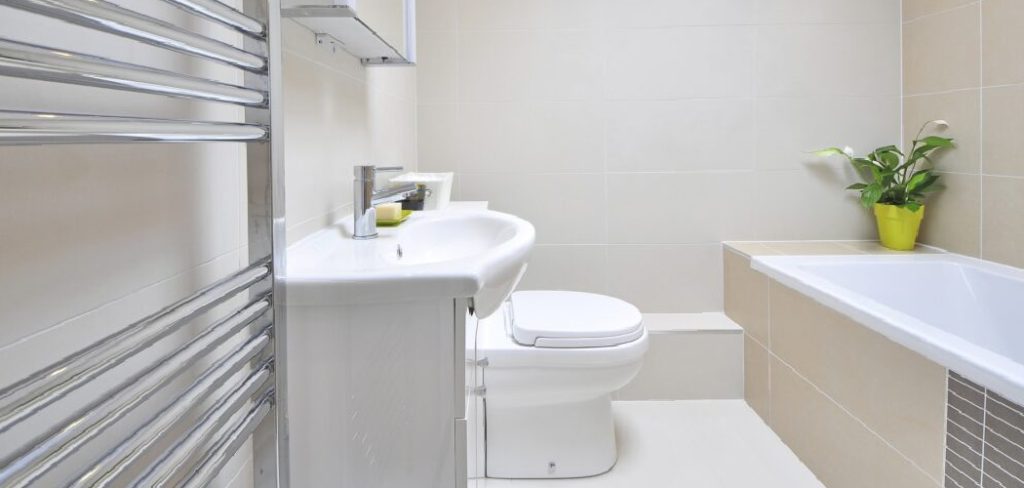
Overview of Solutions for Creating a Bathroom Without Plumbing explores alternatives such as macerating toilets or composting systems, and water reservoirs for supply which are crucial in understanding how to put a bathroom in a basement without plumbing. These systems are designed to handle waste and water efficiently, even in the absence of direct plumbing connections.
Lastly, Benefits of Adding a Bathroom to a Basement Space are numerous. It not only adds to the convenience and livability of the space but also potentially increases the property’s market value. A basement bathroom serves as an excellent addition for families looking to maximize their home’s space and functionality, demonstrating that the hurdles in its creation are certainly worth overcoming.
Planning and Designing the Bathroom Layout
When Assessing Available Space and Location Options, it’s crucial to take inventory of the basement’s existing layout. Considerations should include the proximity to the main water supply and waste disposal systems, even if direct plumbing isn’t an option, as this can impact the installation of systems like macerating pumps or composting toilets.
Also, evaluate the ceiling height, natural light availability, and any obstructions that could affect the bathroom’s placement. Optimal location choices might be near existing utilities to simplify the installation of electrical and water supply systems.
Determining Necessary Fixtures and Features involves listing the essentials for a functional bathroom space. At a minimum, most homeowners will want a toilet, sink, and shower. However, depending on space, budget, and specific family needs, additional features could include a small vanity, a bidet, or even a bathtub. Prioritizing space-saving and multi-functional fixtures is key in a basement setting where space may be more constrained than in other home parts.
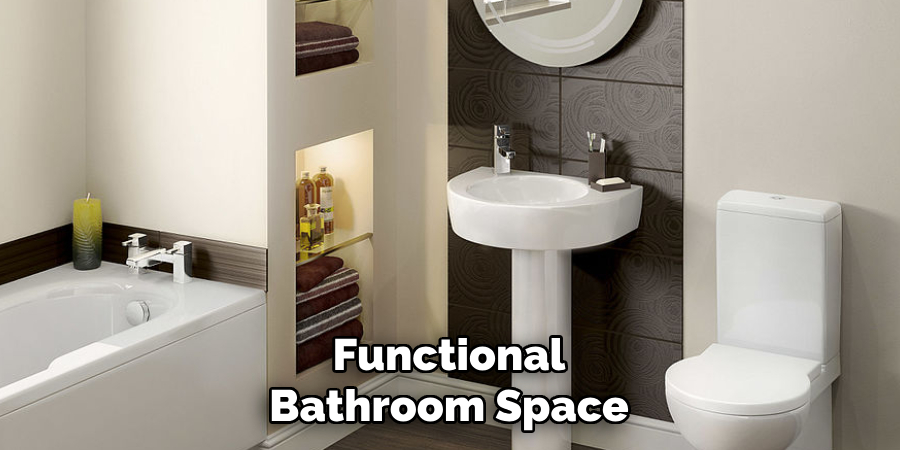
Finally, Creating a Functional and Efficient Layout is about making smart use of the available space. This step requires designing a floor plan that maximizes the bathroom’s utility while ensuring comfortable movement and accessibility. Consider the placement of each fixture with an eye towards efficient plumbing alternatives and ease of installation.
For instance, positioning the toilet nearer to the macerating pump or the water reservoir can reduce complexity and costs. Furthermore, thoughtful layout planning can contribute to a sense of spaciousness despite the basement’s potentially limited square footage.
How to Put a Bathroom in A Basement without Plumbing: Choosing Suitable Fixtures and Components
When outfitting a basement bathroom without traditional plumbing, selecting the right fixtures and components is vital to maximize space and ensure the bathroom meets your needs.
A. Selecting a Space-Saving Toilet Option
Options such as a macerating toilet or a composting toilet are ideal for basement bathrooms without plumbing. A macerating toilet uses a high-powered blade to liquefy waste and paper into a fine slurry, which is then pumped into a home’s existing waste disposal system.
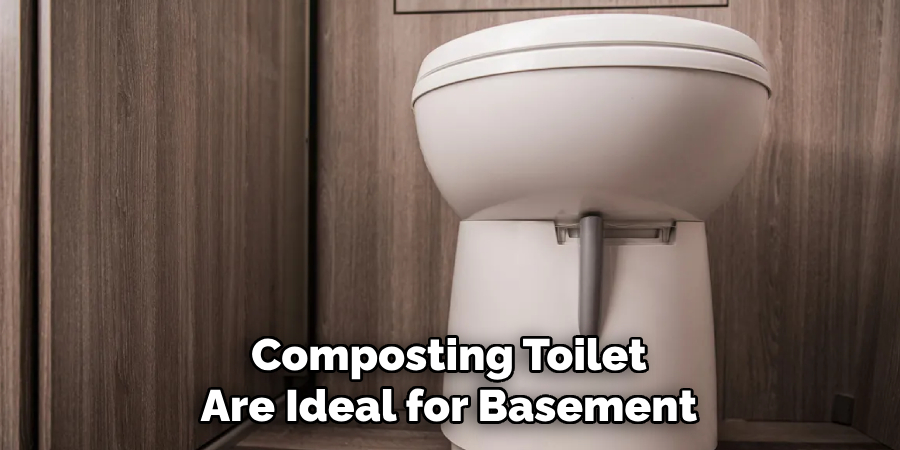
This option requires electricity but can typically be installed without major structural changes. On the other hand, composting toilets offer an eco-friendly solution by decomposing waste into compostable material, requiring no water or septic hook-up. Both options are compact and can be fitted in tight spaces, making them perfect for basement environments.
B. Exploring Alternatives for Shower or Bathing Options
For showering or bathing options, a standalone shower stall is a practical choice for its compact footprint and ease of installation. These can be corner units that further save on space. For those preferring baths, a corner tub might be viable, providing the luxury of a bathtub without demanding the floor space a traditional tub would.
When selecting these components, consider models designed for ease of installation in spaces without traditional plumbing, possibly incorporating features like in-built pumps to handle wastewater.
C. Considering Compact Sink and Vanity Options
Compact sinks and vanities are indispensable in creating a functional yet spacious basement bathroom. Wall-mounted or pedestal sinks are excellent space savers, providing essential functionality without overcrowding the room.
For vanities, look for slim models with storage options to keep toiletries and bathroom supplies organized and out of sight. These compact fixtures not only save space but can also be chosen to enhance the aesthetic appeal of the bathroom, contributing to a more open, airy feel.
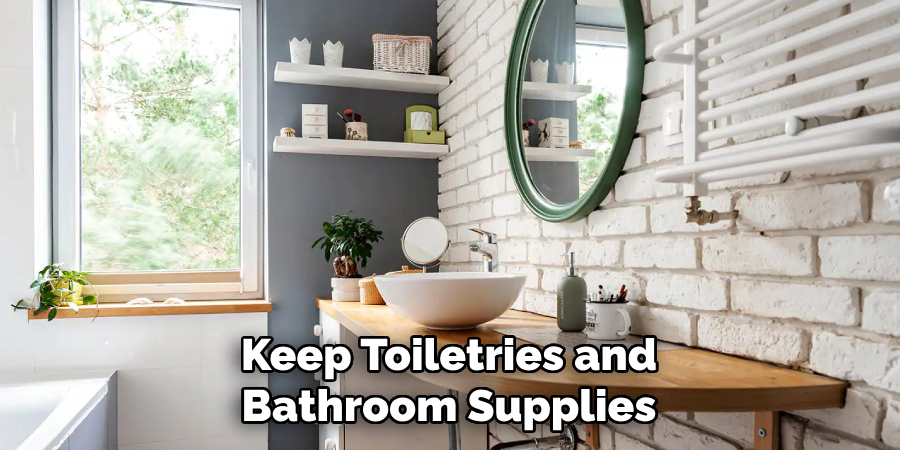
By carefully selecting these key fixtures and components, homeowners can create a fully functional, space-efficient bathroom in their basement, overcoming the challenges of installing a bathroom without traditional plumbing.
This task seems to repeat the content already provided under the section titled “II. Choosing Suitable Fixtures and Components,” which covers the selection of space-saving toilet options, alternative shower or bathing options, and compact sink and vanity choices. Given this, I’ll proceed with a continuation that logically follows the existing sections:
How to Put a Bathroom in A Basement without Plumbing: Implementing Efficient Water and Waste Solutions
Implementing efficient water and waste management solutions is paramount for homes that are adding a basement bathroom without the benefit of traditional plumbing. This involves creative approaches that ensure the space remains functional, hygienic, and environmentally conscious.
A. Water Conservation Practices
Incorporating water conservation practices is environmentally friendly and practical in minimizing the demand for non-traditional water supply systems. Low-flow faucets, showerheads, and toilets can significantly reduce water usage.
Additionally, utilizing greywater systems for flushing toilets or irrigating gardens can further enhance efficiency. These practices not only promote sustainability but also can lead to significant savings on water bills.
B. Efficient Waste Management Systems
When conventional sewage systems are not an option, efficient waste management becomes critical. Beyond choosing a macerating or composting toilet, it’s essential to consider the overall system’s capacity to handle the bathroom’s output.
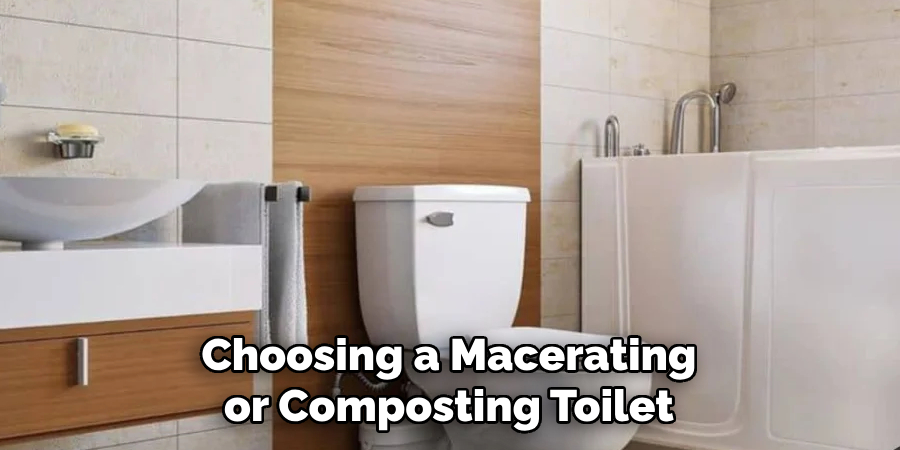
For composting toilets, regular maintenance and understanding the composting process are vital. Ensuring that the electrical system can support these fixtures without issues is crucial for systems reliant on macerating toilets and pumps. Regular maintenance checks are necessary to prevent backups and malfunctions.
C. Water Reservoirs and Pumping Solutions
Establishing a reliable water reservoir can provide a steady water supply for the basement bathroom, which is essential for flushing toilets and watering sinks and showers. Such a reservoir might be filled periodically, depending on the household’s water usage rates and capacity. Coupled with an efficient pumping system, this can ensure a consistent water flow to the bathroom facilities, mimicking the reliability of traditional plumbing.
Through the careful selection and implementation of these efficient water and waste solutions, homeowners can enjoy the convenience and functionality of a basement bathroom without the need for conventional plumbing. This not only expands the usable living space within the home but does so in an environmentally responsible manner.
Addressing Water Supply Needs
After addressing the structure and functionality aspects, the next critical step in ensuring the basement bathroom is fully operational is addressing water supply needs. This involves strategic planning to ensure a reliable and sustainable water source.
A. Installing a Water Tank or Reservoir for Supplying Water
A practical solution for supplying water to a basement bathroom without direct access to the home’s main plumbing is to install a water tank or reservoir. Depending on the available space and the estimated water usage, these tanks can range from small, under-sink models to larger, freestanding units.
The key is to ensure that the tank is properly connected to the bathroom fixtures through efficient pumping systems. This setup may also include sensors to monitor water levels and automate refilling processes from an external water source, ensuring a consistent supply.
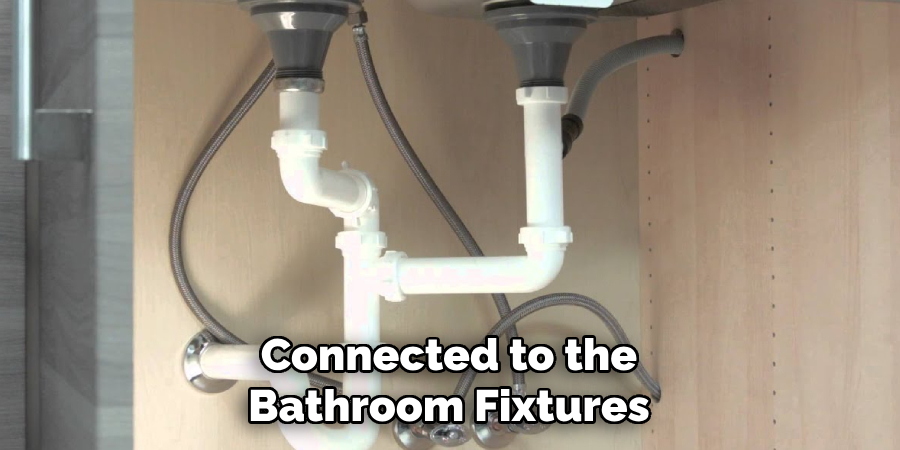
B. Connecting to Existing Water Lines (if available)
For homes where extending existing water lines to the basement is feasible, this option provides a direct and reliable water supply. This process involves a professional assessment of the home’s current plumbing system to determine the most efficient way to branch off to the new bathroom.
Ensuring that any new connections comply with local building codes and standards is crucial. This option also necessitates the installation of check valves to prevent backflow and maintain water quality.
C. Exploring Options for Water Filtration and Treatment
Considering the basement’s unique position in the home, implementing a water filtration and treatment system can be a wise decision. This ensures that the water supplied to the bathroom meets health and safety standards, particularly if the source is a water tank or a direct connection prone to sediment buildup.
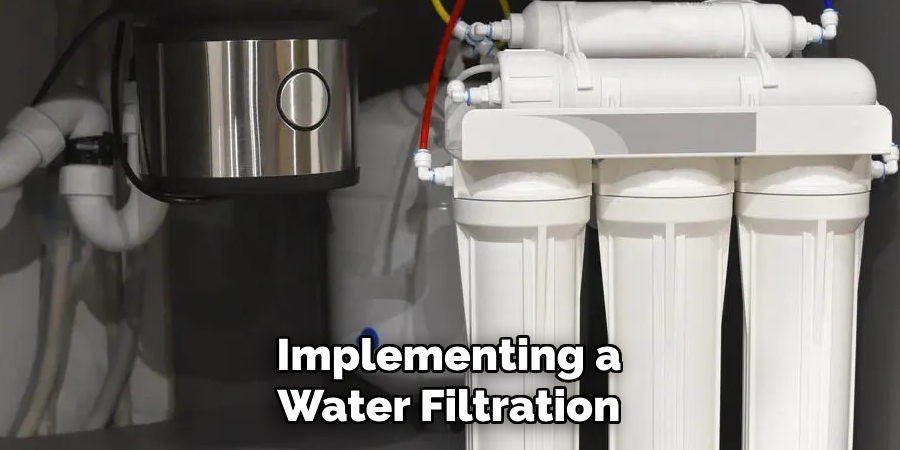
Filtration systems can range from simple under-sink units that purify drinking and usage water to more complex systems designed for the entire supply, addressing contaminants like bacteria, viruses, and chemical pollutants.
Addressing the water supply needs by installing a water tank or reservoir, connecting to existing water lines, and exploring filtration and treatment options ensures that the basement bathroom is not just a functional space but also a safe and comfortable one.
These steps, combined with efficient water and waste solutions, make the addition of a bathroom in the basement a feasible and smart enhancement to any home.
Managing Waste and Drainage
Efficient management of waste and drainage is a crucial component of adding a functional bathroom to a basement setting. This not only ensures the sanitation and hygiene of the area but also contributes to the overall environmental sustainability of the home. Here’s how homeowners can smartly manage waste and drainage in their basement bathroom setup:
A. Installing a Macerating Pump for Waste Disposal
Macerating pumps are an excellent solution for basement bathrooms that are not directly connected to the main sewage line. These units use a high-powered blade to liquify waste and toilet paper into a slurry, which is then pumped through small-diameter pipes to the main sewer or septic system.
The installation of a macerating pump allows for the bathroom to be placed away from the main drain lines without the need for extensive and costly plumbing renovations. Regular maintenance of the macerating pump is essential to ensure it operates efficiently and avoids clogs or breakdowns.
B. Creating Proper Drainage Paths for Wastewater
Ensuring that wastewater from the basement bathroom efficiently exits to the sewer or septic system is critical. Proper drainage involves the installation of adequately sloped pipes to prevent sewage backflow and minimize the risk of blockages.

In cases where the bathroom is situated below the level of the main sewer line, a combination of macerating pumps and backwater valves can be used to facilitate upward and outward flow. Regular checks and maintenance of these drainage paths can prevent potential issues that might arise from clogging or backflow.
C. Exploring Options for Greywater Recycling or Treatment
Greywater recycling or treatment presents an environmentally friendly option for managing wastewater from showers, sinks, and baths. Systems can be installed to treat and reuse this greywater for flushing toilets or irrigating gardens, substantially reducing the household’s water footprint.
Advanced greywater systems filter and treat the water to remove impurities, making it safe for reuse. Considering a greywater system requires an understanding of local regulations and potential installation constraints. With proper planning and execution, greywater recycling can significantly enhance the sustainability of a basement bathroom setup.
By addressing waste and drainage by installing macerating pumps, creating proper drainage paths, and exploring options for greywater recycling or treatment, homeowners can ensure their basement bathroom is functional and environmentally responsible.
Ventilation and Air Circulation
Maintaining optimal air quality and preventing moisture-related issues are pivotal in a basement bathroom setup. Here’s a comprehensive approach to ensuring a well-ventilated space:
A. Installing Ventilation Fans for Moisture Control
The installation of ventilation fans is essential to control humidity and prevent the build-up of mold and mildew. These fans should be strategically placed to effectively remove moist air from the bathroom.
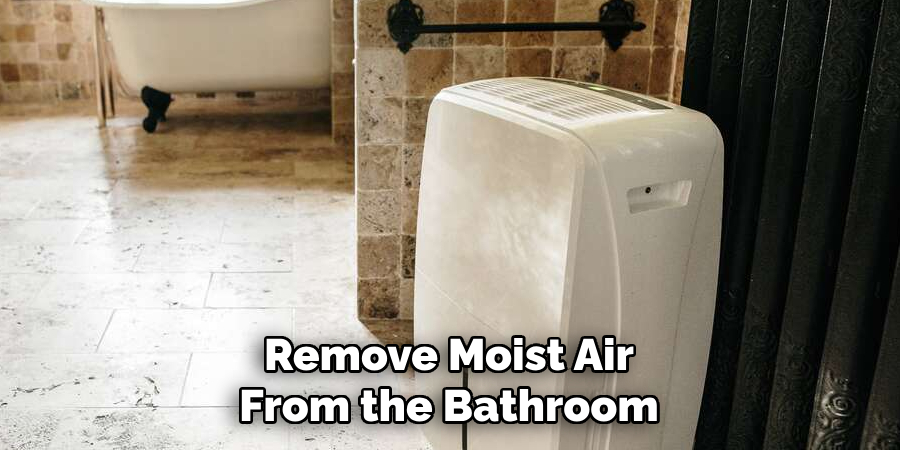
The capacity of the fan, often measured in cubic feet per minute (CFM), should be chosen based on the size of the bathroom to ensure adequate moisture control. Additionally, incorporating a timer or humidity-sensing switch can maximize efficiency by ensuring the fan operates only when necessary.
B. Creating Adequate Airflow and Circulation in the Basement Space
Beyond the bathroom, it’s important to maintain good air circulation throughout the basement to prevent stagnant air and ensure a comfortable environment. This can involve integrating air vents or additional fans in strategic locations to facilitate the flow of fresh air into the basement. Opening windows, if available, can also contribute to this effort, though security and weather considerations must be considered.
C. Considering Options for Odor Control and Air Purification
Ensuring the basement bathroom remains odor-free and the air is purified can greatly enhance the comfort of the space. Installing carbon filter air purifiers can effectively neutralize odors, while UV light air purifiers work well to eliminate bacteria and viruses, contributing to a healthier environment. Dehumidifiers can play a crucial role in maintaining a dry and odor-free atmosphere for spaces prone to dampness and mildew.
By focusing on these key areas—moisture control, airflow, and air purification—homeowners can create a basement bathroom that not only looks great but feels comfortable and healthy too.
Electrical and Lighting Considerations
The electrical layout and lighting scheme play a critical role in enhancing the functionality and ambiance of a basement bathroom. Here’s how homeowners can make prudent choices in this department:
A. Planning Electrical Layout for Lighting, Outlets, and Fixtures
A well-thought-out electrical layout ensures that lighting, outlets, and fixtures are conveniently placed and sufficient for users’ needs. This involves strategically placing outlets for grooming appliances near the vanity, adequate lighting around mirrors, and additional fixtures in shower areas.
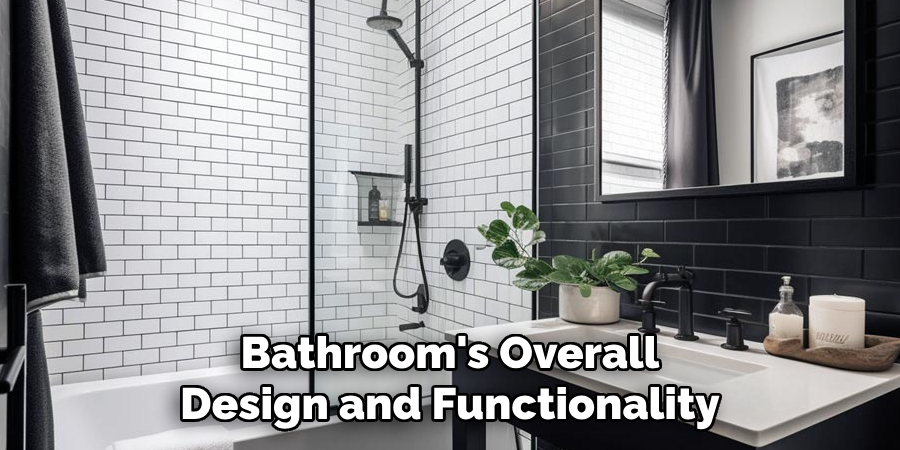
It’s essential to consider the bathroom’s overall design and functionality when planning the electrical layout, ensuring that switches and outlets are accessible and safely located away from water sources.
B. Ensuring Compliance with Building Codes and Safety Standards
Compliance with local building codes and safety standards is non-negotiable when installing electrical systems in a bathroom. This typically includes requirements for GFCI (Ground Fault Circuit Interrupter) outlets to prevent electrical shock, waterproof switch covers, and specific circuit breakers and wiring guidelines.
Consulting with a licensed electrician who is familiar with these codes is crucial to ensure that the electrical installation is safe, legal, and up-to-date with the latest standards.
C. Exploring Options for Energy-Efficient Lighting Solutions
Energy-efficient lighting is not only environmentally responsible but can also significantly reduce electricity bills. LED lights are a popular choice for bathrooms due to their longevity and minimal energy consumption.
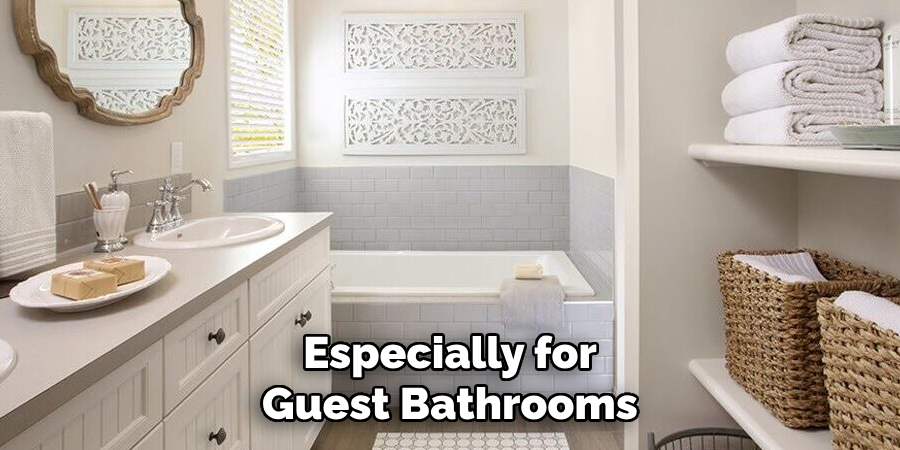
Exploring options like dimmer switches can add versatility to lighting, allowing for adjustable brightness to suit different moods and times of day. Motion sensor lights can also add convenience and efficiency, especially for guest bathrooms that are used less frequently.
By focusing on these key areas—planning the electrical layout, ensuring compliance with codes, and choosing energy-efficient lighting options—homeowners can create a safe, functional, and aesthetically pleasing basement bathroom that meets all their electrical and lighting needs.
Insulation and Moisture Control
Ensuring the basement bathroom remains warm and free from moisture-related problems requires a comprehensive approach to insulation and moisture control. Here are the key aspects to consider:
A. Installing Proper Insulation to Prevent Heat Loss and Condensation
Proper insulation is critical in preventing heat loss through the basement walls and floors, which are often in direct contact with the cold ground. Insulating these areas helps maintain a comfortable temperature inside the bathroom and prevents condensation from forming.
Using materials such as closed-cell spray foam or rigid foam boards can provide an effective barrier against heat loss and moisture ingress. To create a continuous thermal envelope, it’s essential to cover all exposed surfaces, paying special attention to the junctions between walls and floors.
B. Waterproofing Basement Walls and Floors to Prevent Water Damage
Waterproofing the walls and floors of a basement bathroom goes hand in hand with insulation. Applying a waterproof membrane or sealant can significantly reduce the risk of water seeping through the concrete and causing damage or mold growth.
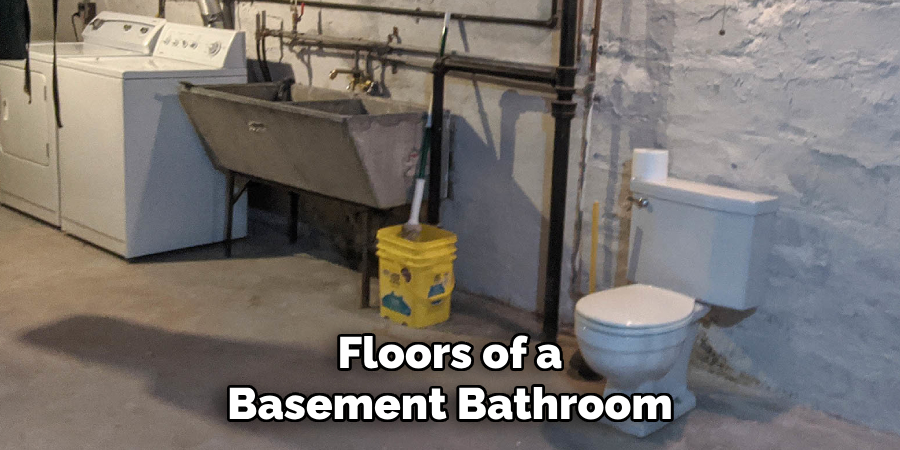
This is especially important in older homes, where the basement may be more prone to dampness due to less effective drainage systems. Ensuring that the waterproof layer is correctly applied and extends beneath the bathroom fixtures will provide long-term protection against moisture.
C. Addressing Potential Moisture Issues with Proper Drainage Systems
Adequate drainage is vital in managing the moisture levels in a basement bathroom effectively. This may involve installing a sump pump to remove excess water or improving the exterior drainage to redirect water away from the foundation.
Ensuring that the shower and sink areas are properly sealed and connected to the drainage system inside the bathroom will prevent standing water, which can lead to mold and mildew. Regular maintenance of these systems is necessary to ensure they continue to function effectively and protect the bathroom from moisture-related issues.
By focusing on these critical areas—insulation, waterproofing, and drainage—homeowners can create a comfortable, dry, and healthy environment in their basement bathroom, safeguarding their investment and improving the overall quality of life in their homes.
Flooring and Surface Materials
The selection of appropriate flooring and surface materials is essential for ensuring the longevity and functionality of a basement bathroom. These choices not only impact the room’s aesthetic but also its ability to withstand the unique conditions of a basement environment, such as higher moisture levels and potential water exposure.
A. Choosing Suitable Flooring Options for Basement Environments
When selecting flooring for a basement bathroom, it’s crucial to opt for materials that can handle moisture and are resistant to mold and mildew. Ceramic and porcelain tiles are excellent choices due to their durability and water resistance.
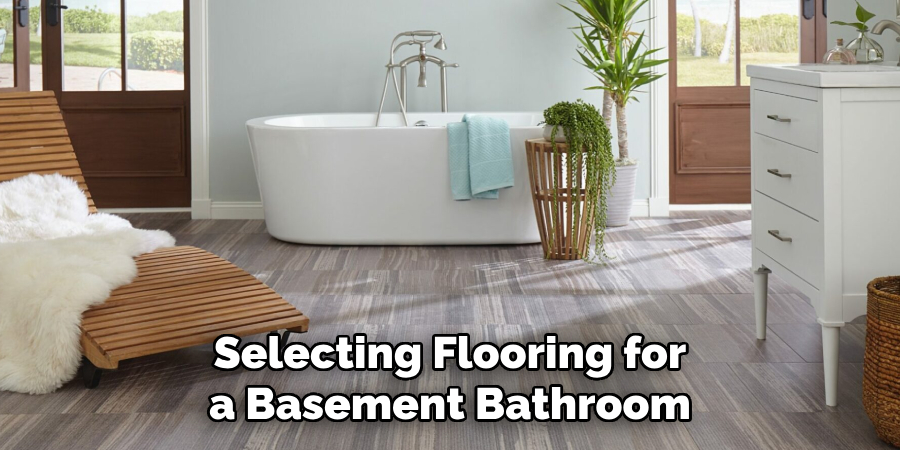
Luxury vinyl tile (LVT) or planks (LVP) also offer a waterproof solution with a wide range of designs that can mimic the look of wood or stone without the risk of water damage. These flooring options also contribute to the overall warmth and comfort of the space, which is particularly important in a basement setting.
B. Exploring Waterproof and Moisture-Resistant Surface Materials
Materials that can withstand humidity and direct contact with water are necessary for the walls and countertop surfaces. Non-porous materials such as quartz for countertops and glazed tiles for walls are ideal as they prevent water absorption and are easy to clean.
These materials also come in various colors and patterns, allowing homeowners to customize their space while ensuring functionality and longevity. Waterproof paint can also be used on certain wall sections to add an extra layer of moisture protection.
C. Considering Low-Maintenance and Durable Finishes
In a high-use area like a bathroom, selecting finishes that are low maintenance and durable is key to long-term satisfaction and usability. Matte finishes on fixtures and hardware can minimize the appearance of fingerprints and water spots, making them a practical choice for busy bathrooms.
Additionally, choosing grout that is stain-resistant and easy to clean will keep tiled areas looking new for longer. Incorporating these low-maintenance and durable finishes will help ensure that the basement bathroom remains a functional and inviting space for years to come.
By carefully selecting suitable flooring, waterproof and moisture-resistant materials, and low-maintenance finishes, homeowners can design a basement bathroom that combines style, durability, and practicality.
Finishing Touches and Decor
The final step in creating the perfect basement bathroom involves adding those finishing touches and decor that transform the space from merely functional to genuinely inviting. With the right decorative elements, storage solutions, and attention to accessibility and safety, a basement bathroom can become one of the most comfortable and appealing rooms in the home.
A. Adding Personal Touches with Decorative Elements
A bathroom’s aesthetic is significantly enhanced by the decorative touches you choose. Whether it’s through the use of vibrant wall art, elegant mirrors that reflect light and create a sense of space or the strategic placement of indoor plants that add freshness and a touch of nature.
Soft furnishings such as plush towels and a stylish bath mat can introduce color and texture, while carefully selected bathroom accessories like soap dispensers and toothbrush holders contribute to the cohesive look. These personal touches ensure the bathroom is not only beautiful but also reflects your unique style.
B. Incorporating Storage Solutions for Toiletries and Supplies
Effective storage solutions are key to maintaining a clutter-free and organized bathroom. Utilizing the vertical space with floating shelves or tall cabinets allows for efficient storage of towels, toiletries, and cleaning supplies while minimizing the footprint on the floor.
Drawer organizers and storage baskets can help keep smaller items tidy and accessible. Opting for furniture that serves dual purposes, such as a vanity with ample cabinet space or a mirror with hidden shelving, can maximize storage without compromising on style.
C. Ensuring Accessibility and Safety Features
Accessibility and safety should never be an afterthought in bathroom design. Features such as grab bars in the shower and near the toilet, a walk-in shower with a non-slip floor, and adequate lighting throughout can make a significant difference in ensuring the space is safe and accessible for everyone.
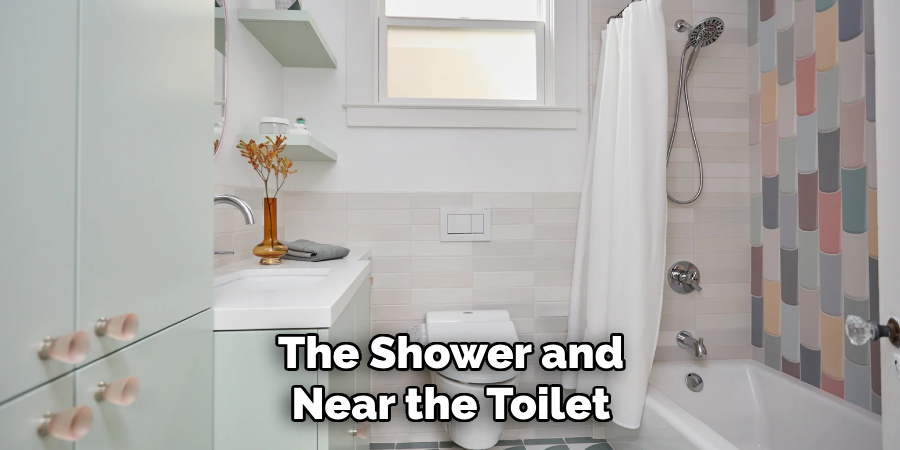
Additionally, adjustable shower heads and lever-handled faucets can enhance usability, providing a comfortable and convenient bathroom experience for individuals of all ages and abilities.
By focusing on these finishing touches and decor, homeowners can create a basement bathroom that is not only functional but truly a sanctuary, offering a blend of style, comfort, and practicality.
Final Inspections and Testing
Conducting thorough inspections and testing is a critical final step after the installation and decoration stages of a basement bathroom. This process ensures that all bathroom elements are safe, functional, and aligned with local building codes and standards.
A. Conducting Plumbing and Electrical Inspections
Plumbing and electrical systems are the lifelines of a bathroom’s functionality and safety. A licensed plumber should inspect all plumbing installations, including pipes, drains, and faucets, to ensure there are no leaks or water pressure issues.
Likewise, an experienced electrician must verify that the electrical wiring, outlets, and fixtures meet safety standards and are properly insulated and grounded, especially in a high-moisture environment like a bathroom. These inspections help prevent future problems that could lead to costly repairs and potential safety hazards.
B. Testing Fixtures and Components for Proper Functionality
Once inspections are complete, testing each component of the bathroom is essential. This includes flushing toilets, running faucets and showers to check water pressure and drainage, testing the ventilation system for effective moisture removal, and ensuring that lighting fixtures work as intended. This step verifies the bathroom’s operational efficiency and allows for identifying any issues that need addressing before the space can be fully utilized.
C. Making Necessary Adjustments and Improvements
Should inspections and tests reveal any concerns, making necessary adjustments and improvements is vital. This may range from minor tweaks, like adjusting water pressure or sealing minor leaks, to more significant repairs, such as addressing faulty wiring or resolving structural issues. It’s important to address these adjustments promptly and thoroughly to ensure the basement bathroom is safe, comfortable, and functional for its users.
Completing these final inspections and tests and making any necessary adjustments marks the culmination of a well-executed basement bathroom project. This meticulous approach guarantees a high-quality, durable bathroom ready for years of use, providing homeowners with peace of mind and enhancing the overall value of the property.
Conclusion
Designing and installing a bathroom in a basement without traditional plumbing presents unique challenges but also offers innovative solutions. By utilizing upflush toilets, macerating units, or sewage ejector systems, homeowners can circumvent the need for conventional plumbing infrastructure.
These technologies allow for the efficient removal of waste, even below the sewer line, making it feasible to install a fully functional bathroom in spaces previously considered unsuitable.
The key to a successful basement bathroom project, especially one without standard plumbing, lies in meticulous planning and precise execution. Understanding the space’s limitations and possibilities, obtaining all necessary permits, and choosing the right equipment are critical steps.
Professional consultations with plumbers and contractors can provide valuable insights into the most effective layouts, technologies, and materials for a durable and compliant bathroom.
For those wondering how to put a bathroom in a basement without plumbing, remember that innovative solutions like upflush toilets and macerating systems can bridge the gap. However, success also hinges on the careful selection of moisture-resistant materials, efficient use of space, and attention to detail during installation.
Regularly maintaining the unique plumbing systems used in such setups is crucial to prevent issues. Finally, considering the space’s aesthetics and functionality will ensure that your basement bathroom is practical and a comfortable and attractive part of your home.

